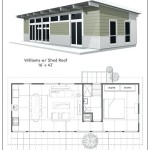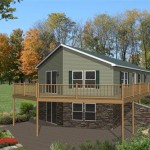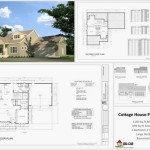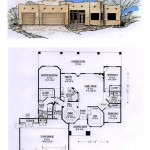Floor Plans for Apartments Over Garages
Apartments situated above garages offer a unique blend of practicality and privacy. They provide a separate living space, often ideal for rental income, extended family members, or a home office, while maximizing the use of existing property. Careful planning is crucial, however, to ensure the space is functional, comfortable, and adheres to building codes.
Key Considerations for Garage Apartment Floor Plans
Several factors influence the design and layout of an apartment over a garage. Understanding these elements is vital for creating a successful and compliant structure.
Garage Structure and Size
The existing or planned garage's dimensions directly dictate the apartment's footprint. A larger garage provides more flexibility for layout options, while a smaller garage may necessitate a more compact design. The garage's structural integrity must also be assessed to ensure it can support the additional weight and load of a living space above. This often involves reinforcing the foundation, walls, and roof.
Local Building Codes and Regulations
Adhering to local building codes is paramount. Regulations regarding ceiling height, fire safety, egress windows, insulation, ventilation, and accessibility requirements must be followed. Consulting with local authorities and obtaining the necessary permits before commencing construction is essential.
Accessibility and Staircase Placement
Careful consideration must be given to how the apartment will be accessed. An external staircase offers greater privacy and separation from the garage, while an internal staircase may be more convenient, particularly in colder climates. Staircase design must adhere to building codes for safety and accessibility, considering factors such as riser height, tread depth, and handrail requirements. The location of the staircase also impacts the overall layout of both the garage and the apartment.
Plumbing and Electrical Considerations
Integrating plumbing and electrical systems requires careful planning. Connecting to existing utilities in the main house may be the most efficient approach, but the capacity of those systems must be assessed. Separate metering for the apartment can be beneficial for tracking utility usage. The layout of plumbing fixtures, such as the bathroom and kitchen sink, should be planned to minimize the length of pipes and reduce installation costs. Similarly, electrical outlets and lighting fixtures should be strategically placed for optimal functionality and energy efficiency.
Layout and Functionality
The apartment's layout should prioritize functionality and efficient use of space. An open-plan design can create a sense of spaciousness in smaller units. Clearly defining living areas, such as the kitchen, bedroom, and bathroom, is crucial. Incorporating ample storage solutions, such as built-in closets and cabinets, can maximize usable space and minimize clutter.
Natural Light and Ventilation
Maximizing natural light and ventilation enhances the comfort and livability of the space. Incorporating windows on multiple sides of the apartment, if possible, allows for cross-ventilation and abundant natural light. Skylights can also be a valuable addition, particularly in rooms with limited wall space for windows. Proper ventilation is crucial for controlling moisture and preventing mold growth, especially in bathrooms and kitchens.
Insulation and Soundproofing
Adequate insulation is critical for maintaining a comfortable temperature and minimizing energy costs. Insulating the walls, ceilings, and floors helps to regulate temperature fluctuations and reduce noise transfer. Soundproofing between the garage and the apartment is particularly important to minimize noise disruption from vehicles and other garage activities. Using sound-dampening materials in the flooring and walls can significantly enhance the acoustic privacy of the apartment.
Budget and Material Selection
Establishing a realistic budget is essential before beginning construction. Material choices will significantly impact the overall cost of the project. Durable, low-maintenance materials are recommended for both the interior and exterior of the apartment. Consider factors such as durability, aesthetics, and energy efficiency when selecting materials for flooring, countertops, cabinetry, siding, and roofing.
Design Aesthetics and Style
While functionality is paramount, the aesthetic appeal of the apartment should not be overlooked. The design style should complement the main house and the surrounding environment. Choosing a cohesive color palette, incorporating attractive finishes, and selecting appropriate lighting fixtures can enhance the overall appeal of the space. Consider the target occupant when making design choices, whether it be a tenant, family member, or for personal use.

Garage Apartment Plans Living

Extended 2 Car Two Story Garage Plan W Apartment Option

Garage Apartment Floor Plans

30 X Two Bedroom Garage Apartment Architectural Plan With Elevations Materials Blueprint Digital

Apartment Over Garage Plan

New Garage Apartment Plans Houseplans Blog Com

Plans For A Two Bedroom Apartment Above Car Garage
Chic And Versatile Garage Apartment Plans Blog Eplans Com

Pin Page

1107 1 24 X








